Clarinet VOIP: H323 Simulation
The Clarinet system allows not only to monitor H323 but also to
simulate VOIP calls supported by H323 protocol.
From the version 10.3 (delivered May 2001), the regular Clarinet Run-Time package includes
a new IP data simulator function similar to the previous data similator
supporting Frame Relay or Frame Relay, X25: an automatic simulation of Voice-Over IP H323 protocol.
This new IP simulator includes functions to define the stack of
emulators from IP layer to H323 layer and to specify the behavior at each
layer of simulation
The H323 call simulation is able to run automatic simulation over different
types of interfaces (Ethernet, E1/T1, ATM, Vseries).

A new type of data profile in the Clarinet Run-time allows to
built automatic H323 simulators |
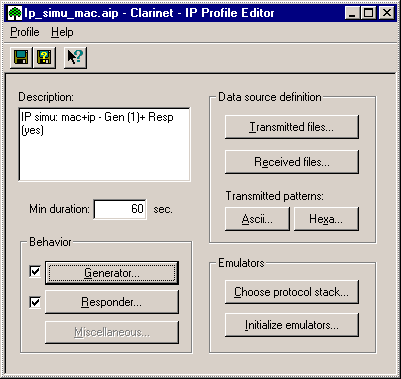 |
This H323 simulator includes functions to define the stack of
emulators from IP layer to H323 layer and to specify the behavior at each
layer of simulation
The H323 call simulation is able to run the simulation over
different types of interfaces which need to build different stack of
protocols.

A stack of protocols corresponds to each type of
interfaces with a coverage of options.
|
|
|
|
This H323 simulator uses a stack of emulators from IP layer to
H323 layer.
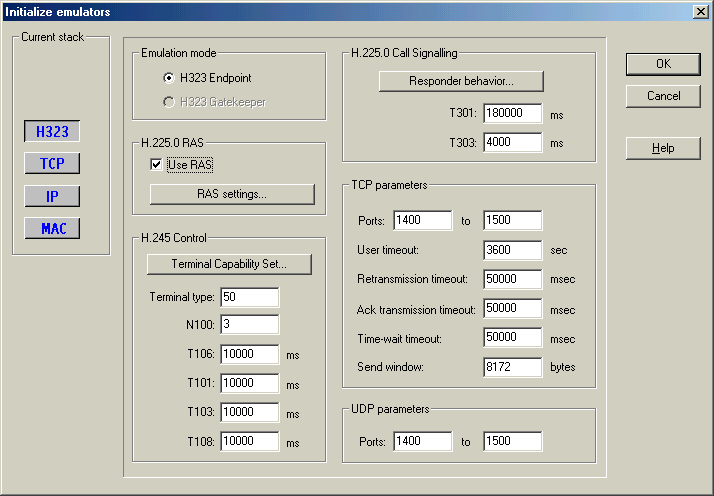
A set of values and options is specified at each layer of
emulation.

A sequence of messages is defined for terminating incoming
calls.
|
|
|
The simulation behavior includes the both functions:
|
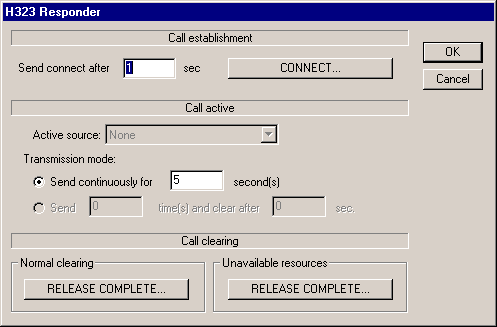
|
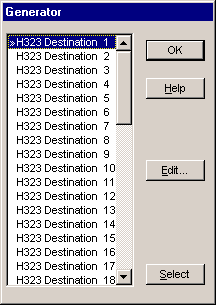 |
The messages used for signaling are based one
ITU-Q931 recommendation.
The IE editor developed for edition of ISDN messages simulation behavior includes the both functions:
|
|

|
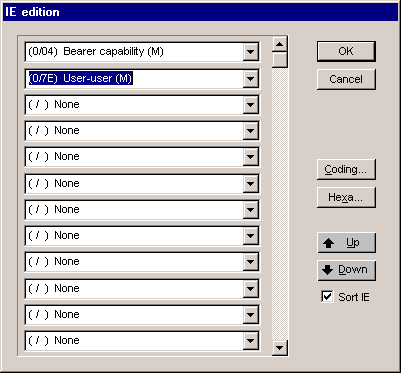
|
| The specification of each outgoing call includes
operating conditions (delays...) and edition of the SETUP message.
The Clarinet Information Element Editor allows to add/remove any
of the from the choice list.
|

|
The 'coding' access to the content of the IE displays
the fields of the IEs.
It allows to modify them by selecting values or designation
from a choice list. Optional octets can be
selected/deselected. |

|
|
|
The 'coding' access to any User-User IE encoded
by using the PER ASN1 notation launches the Clarinet PER encoder.
This tools displays simultaneously the User-User content in both
windows:
- Hex value
- ASN1 notation .
It allows to modify the content and to encode/decode the
literal PDU.
The content is fully saved in the profiles. Templates of ASN1
encoded User-User are provided for helping the customer to setup the
messages. Only the values of the addresses, dial numbers... have to
be changed in the content.
Advance users will take advantage of this tool to encode
different level of facilities. |
 |
|
The on-line simultaneous monitoring provides an invaluable
trace for the H225/H245 messages decoding and sequencing.
Additional traces of primitives used between the different layers
provide indications about the commands/indications exchanged during
executions. |
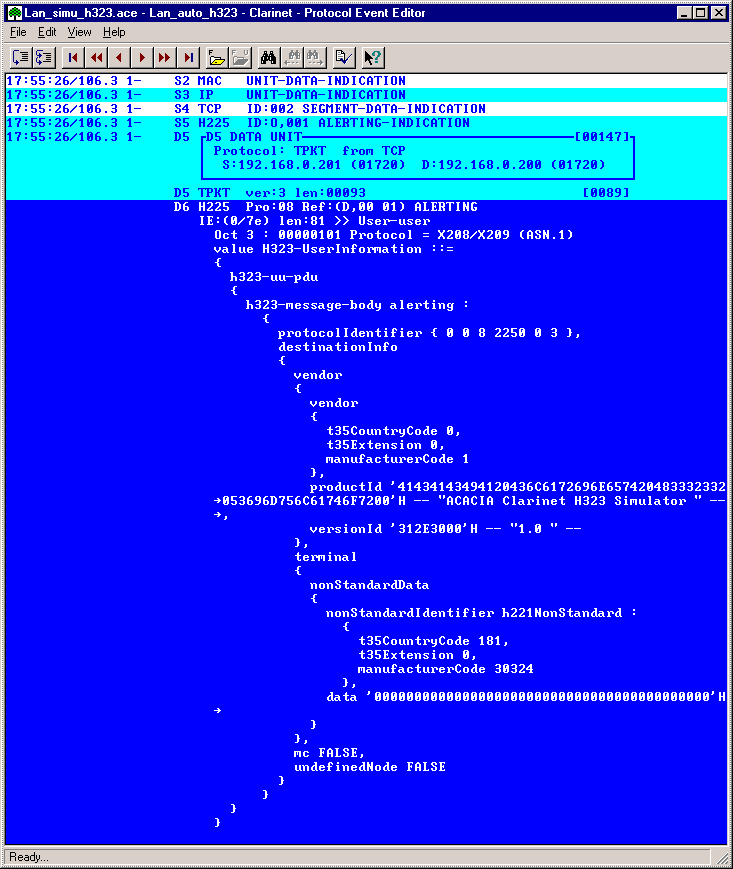 |
| 